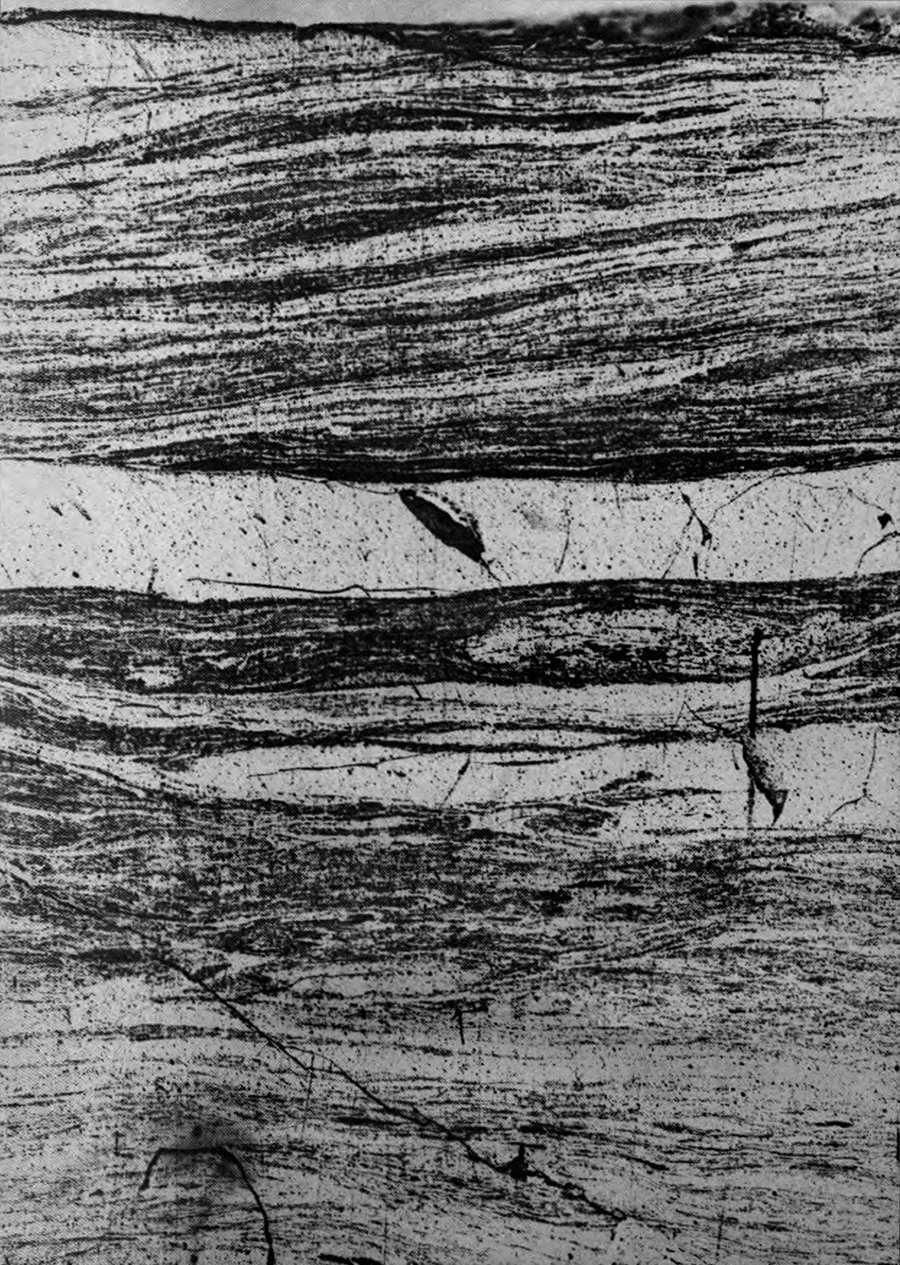laminae, débris

Section from near center of lump of coal shown in Plate I, A, magnified 10 times. Shows subdivisions of the dull layers.
Plate II (cropped to square, inv), ex F(rank). K. Ovitz, Coking of Illinois Coals (Department of the Interior, Bureau of Mines, Bulletin 138, 1917)
U. Michigan copy : link
same, via hathitrust : link
—
...and found that the shiny layers consist of fragments of “wood” and range from a few microns to several millimeters in thickness. The “woody” nature is readily discerned by examining sections across the grain. Most of the “woody” layers are highly resinous, and in some samples almost the entire “woody” component has disappeared, and little is left except the resinous material. The dull layers are generally thicker than the shiny ones and are composed largely of finely disintegrated material, or “débris.” On closer examination they are found to be further divided into dull and shiny laminae a fraction of a millimeter thick. As in the thicker layers, the shiny parts are of a “woody” nature and the dull parts are composed of disintegrated material.
p 22, with regard to structure shown in in Plates I, A, and II.
asides
Frank K. Ovitz
several patents : link
“Frank K. Ovitz, ’05, is Civilian War Casualty”
While conducting a final test on a new flame throwing device for the Army Ordnance Division, Frank K. Ovitz, ’05, p’01-’02, was killed May 6, at the plant of the Standard Oil Company of Indiana, Whiting, Indiana. The resulting explosion also took the lives of three other engineers engaged in perfecting the weapon. Ovitz had been with Standard Oil since January, 1920, and practically his entire professional life was devoted to research on combustion of oil and petroleum products...
— The Michigan Alumnus 51:22 (June 16, 1945) : 414 : link
initial landing, a different project : link